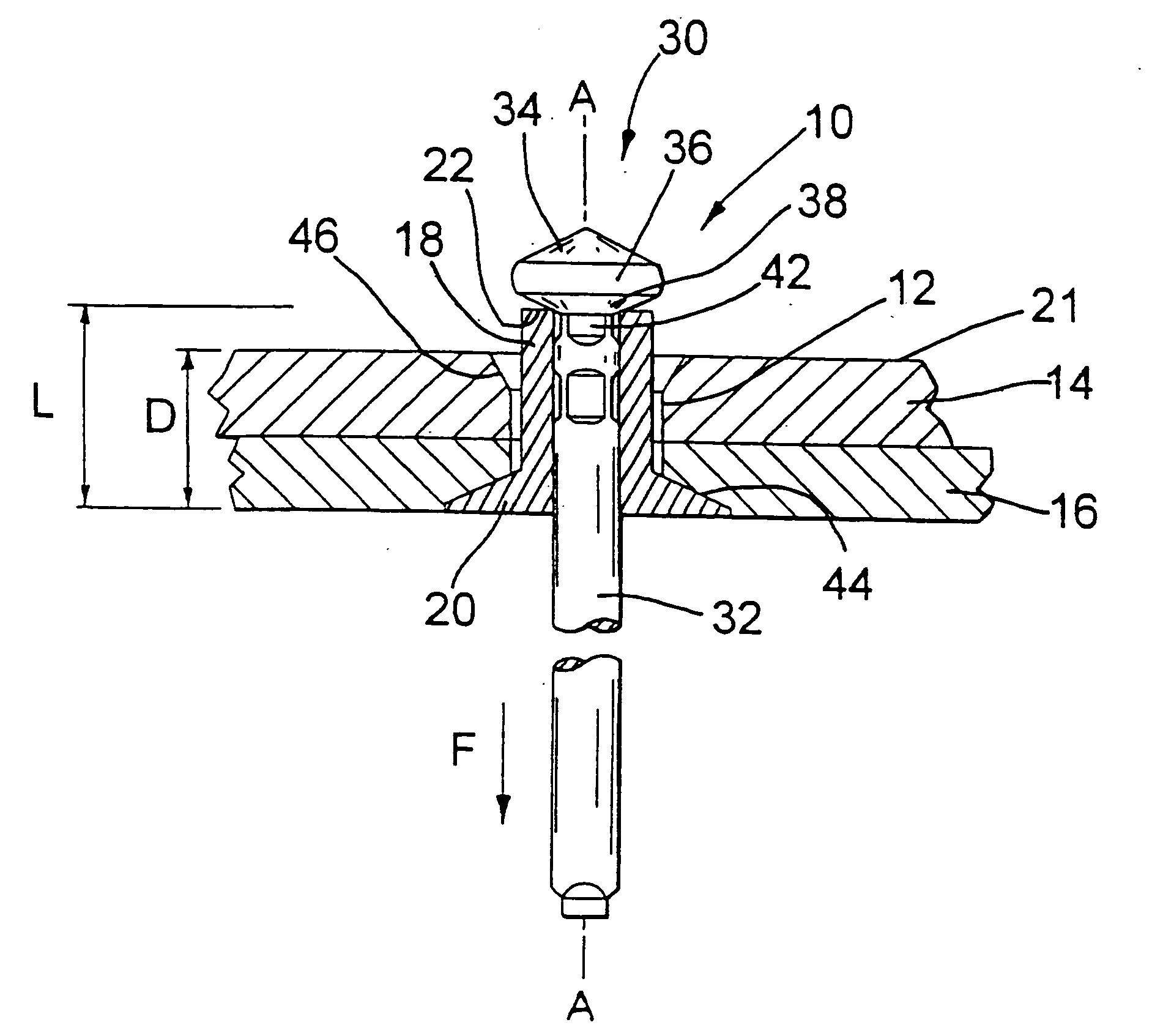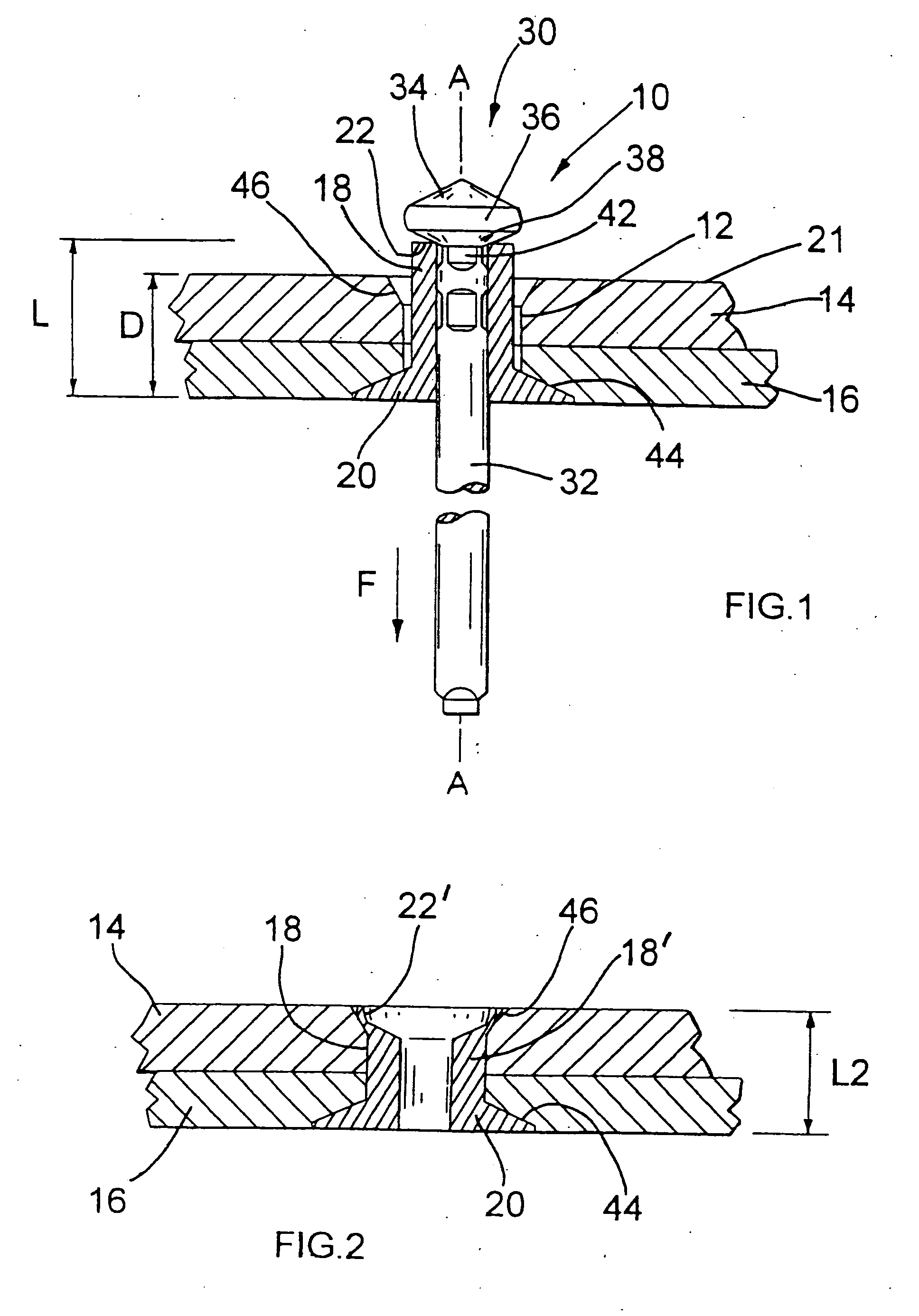Blind rivet method
a technology of blind rivets and rivets, which is applied in the direction of fastening means, screws, dowels, etc., can solve the problems of limiting the available workspace on the blind side of work pieces, and achieve the effect of increasing the diameter of the head and preventing it from becoming distorted
- Summary
- Abstract
- Description
- Claims
- Application Information
AI Technical Summary
Benefits of technology
Problems solved by technology
Method used
Image
Examples
Embodiment Construction
[0017] Referring now to FIG. 1, a blind rivet assembly 10 is shown inserted, but not set, in a preformed hole 12 extending between two work pieces 14 and 16. The rivet assembly 10 comprises a hollow tubular rivet body 18 having an enlarged counter-sunk flange 20, this counter-sunk head tapering inwards along an axis A of the rivet body for complimentary receipt within a pre-formed counter-sunk region 44 of the hole 12.
[0018] The remote tail end 22 of the rivet body 18, axially opposed to the flange 20, has a substantially flat end face extending perpendicular to the rivet axis A. The rivet body length L is predetermined to be between 25% and 55% greater than the combined depth D of the two work pieces 14 and 16. This depth D is commonly referred to as the grip thickness of a blind rivet—defined as the thickness of material to be gripped by the set rivet. In the present embodiment, depth L is approximately 30% greater than depth D. As is conventional for blind rivets, the assembly 1...
PUM
| Property | Measurement | Unit |
|---|---|---|
| angle | aaaaa | aaaaa |
| angle | aaaaa | aaaaa |
| angle | aaaaa | aaaaa |
Abstract
Description
Claims
Application Information
 Login to View More
Login to View More - R&D
- Intellectual Property
- Life Sciences
- Materials
- Tech Scout
- Unparalleled Data Quality
- Higher Quality Content
- 60% Fewer Hallucinations
Browse by: Latest US Patents, China's latest patents, Technical Efficacy Thesaurus, Application Domain, Technology Topic, Popular Technical Reports.
© 2025 PatSnap. All rights reserved.Legal|Privacy policy|Modern Slavery Act Transparency Statement|Sitemap|About US| Contact US: help@patsnap.com


